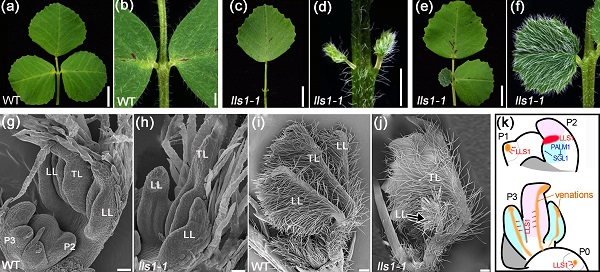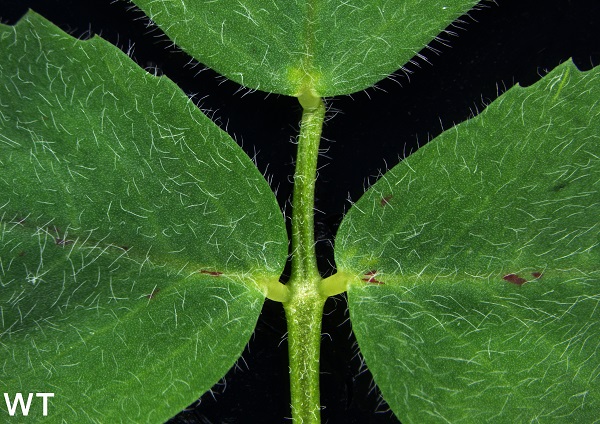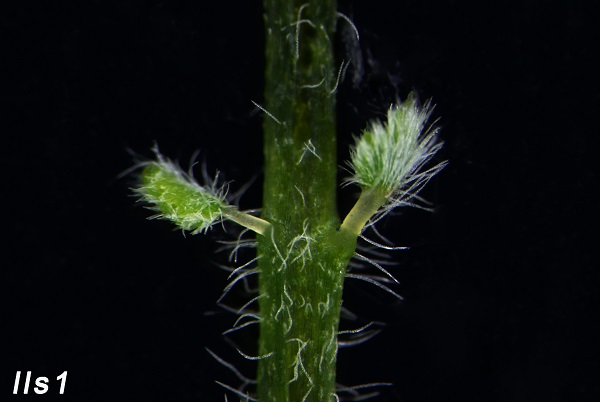Leaf form in angiosperms can be described as simple or compound leaf, the latter being composed of multiple leaflets. The plant hormone auxin is known to play crucial roles in leaf development, and numerous auxin-related factors are reported to be involved in compound leaf development. However, no auxin biosynthetic or metabolic genes were reported to regulate trifoliolate compound leaf development of M. truncatula, a plant widely used as a model in legume biology.
In a recent study published in New Phytologist, researchers from Xishuangbanna Tropical Botanical Garden (XTBG) identified mutants of the YUCCA1 gene in M. truncatula. They characterized the Lateral Leaflets Suppression1 (LLS1) /Medtr1g011630 gene, encoding a key auxin biosynthetic enzyme MtYUCCA1 by using genome resequencing approaches.
The researchers characterized six independent mutant alleles of the lateral leaflets suppression1 (lls1), which showed the same defects wherein two lateral leaflets became malformed in various shapes and sizes.
Linkage analysis and complementation tests showed that the lls1 mutant phenotypes were caused by the Tnt1 insertions that disrupted the LLS1 gene. They further found that the LLS1-mediated auxin biosynthesis primarily influenced two lateral leaflets development of M. truncatula, especially at the secondary morphogenesis stage based on anatomical analyses.
The transcripts of LLS1 can be detected in primordia at early stages of leaf initiation and later in the basal regions of leaflets, and finally in vein tissues at late leaf developmental stages.
Moreover, genetic interaction analyses between lls1 with sgl1 and palm1 mutants suggested that LLS1 regulated compound leaf development in a SGL1-dependent but PALM1-independent manner. Compared to the SGL1 and PALM1, two key regulators of the primary morphogenesis, LLS1 functions to regulate the lateral leaflet outgrowth during secondary morphogenesis.
“Our results showed that the auxin biosynthetic gene, LLS1, plays very important roles in the outgrowth of leaflets of M. truncatula, in addition to leaf venation”, said Prof. CHEN Jianghua, principal investigator of the study.
Contact
CHEN Jianghua Ph.D Principal Investigator
Key Laboratory of Tropical Plant Resources and Sustainable Use, Xishuangbanna Tropical Botanical Garden, Chinese Academy of Sciences, Menglun 666303, Yunnan, China
E-mail: jhchen@xtbg.ac.cn

Phenotype of lls1 alleles. (Image by ZHAO Baolin)

Wild-type compound leaf of Medicago truncatula (Image by ZHAO Baolin)

Lateral leaflet defect in lls1/mtyucca1 mutant (Image by ZHAO Baolin)



